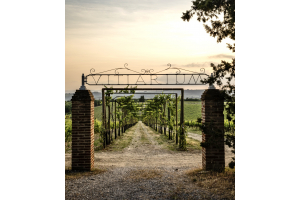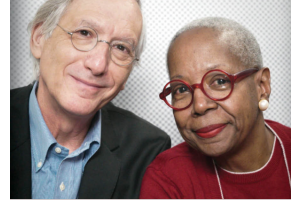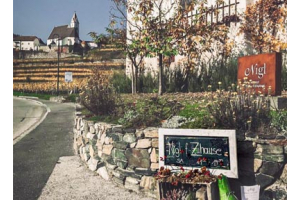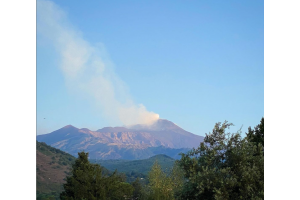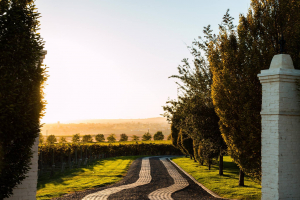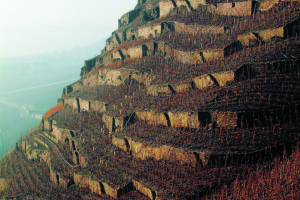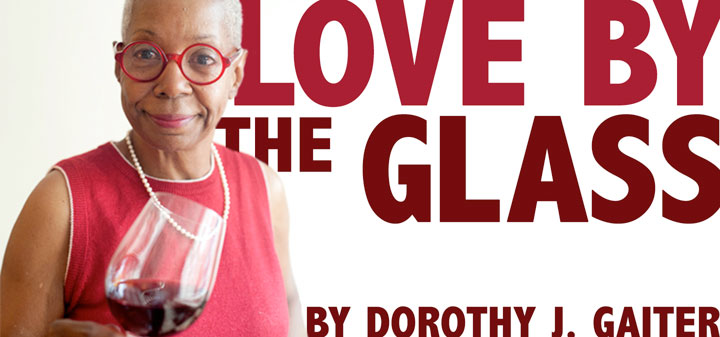
If your first impression of Kent Rasmussen is that he looks professorial, you wouldn’t be far off the mark. Before he became a professional winemaker, as opposed to the amateur he was in high school, making wine in his garage before that became a thing, Rasmussen’s life revolved around books. He was a librarian.
An academic pursuit launched him in his life of wine. During the summer after his sophomore year in high school, he was an exchange student sent to Germany. “I randomly got placed with a winemaking family in the village of Bissersheim in the Rhine Pfalz winemaking region. It was a fun and very, very drunken time,” he told me.
“It was July, so there was vineyard work to do and they dragged me into that, and at the end of the day there was a wonderful social life in the little village. There was a men’s choir, summer picnics. But the evenings were largely spent eating and drinking the wonderful Rieslings of the region.”
So what’s a good student to do? As it happens, his parents, San Francisco psychologists, moved to the Carneros region of Napa in 1979 when his mom’s job transferred her there. They weren’t much interested in wine, he wrote, but “in those days, land was very cheap and they bought a house that had a vineyard around it” with what he calls “lovely Pinot.”
He put his newfound knowledge to work. “When I got home I started to look at wine more seriously. Then started to make little lots, then bigger lots, and by the late 1970s, the writing was on the wall.”
His first vintage was 1979 and he told me that he last had it two years ago and it was “still drinking beautifully.”
This is the 28th year that Rasmussen and his wife, Celia, a witty, stylish chanteuse and dancer, have made wine at Kent Rasmussen Winery in Napa, which also makes a more value-priced wine that sports her last name, Ramsay. Pinot Noir is the only wine they make. They are 57.
Their history is the story of change, micro and macro, personal and emblematic of the times. After earning a bachelor’s degree from the University of California at Berkeley in Pre-Colonial African History and working while a student in the campus library, Rasmussen was hired as supervisor of circulation for the university’s library system. He was happy for about a year and a half. Then one day he decided, “I am not going to spend the rest of my life working indoors. I had been a home winemaker for many years and was making good wine. I thought ‘Well, why not?’ I wish that I could say there was more thought to it than that, but I was young.”
Having stepped away from the Dewey Decimal System, he enrolled at UC-Davis, intent on turning his hobby into a profession. With a degree in enology in 1983, he set off to get hands-on experience at Robert Mondavi Winery. “It was the best learning ground that there ever was in the wine business,” he told me. “Robert was a great man, a character, but most importantly, he believed in quality and truly led the winemaking world in providing it.” Rasmussen also gained experience at Domaine Chandon in Napa and at wineries in South Africa and Australia.
He and Ramsay had run into each other for years in San Francisco and they dated for three months before he shipped out for a month’s internship in Australia in 1985.
‘“A month of separation told us both that this was the real thing,’’ he said. “Celia borrowed enough for an air ticket from a friend and flew off to Oz. That was the beginning of a long, sweet and very, very fun relationship that hasn’t ended yet!”
They built their winery, which wasn’t open to the public, on the Silverado Trail in St. Helena. Their first release was 1986. “It was a stunning vintage,” he said. “It encouraged us to go on.”
They pinned their reputation on that notorious, fickle, challenging variety, Pinot Noir. “In that day and age, I mean it was the black sheep of California’s industry,” he said. Yet, “it was the wine that I wanted to address.” They referred to the Pinot Noir they made from the Carneros vineyard around his parents’ home as “Poetic Pinot Noir,” reflective of their literary bent. Ramsay writes and records songs, performs in the area, and teaches dancing. She also handles compliance for the winery.
“When we started, my wife and I were just a couple Berkeley hippies and we really had absolutely no money. We were able to build a winery with absolutely nothing and you can’t do that anymore,” Rasmussen said. They did borrow $20,000 from his mother, which he paid back, but it was the only money they’ve ever borrowed, he said.
“Everything else was built with money the business generated. It was a very, very different world back then. Things were cheap, there was lots of camaraderie amongst vineyardists and winemakers, and the regulations were very simple. No one could ever do that today. I think it should be the mantra of my life: right-time, right-place.”
Still, to put food on the table, Ramsay worked at Robert Mondavi Winery those first few years as a field sampler and secretary to the winery engineer. “It took about 18 years before we made more than just minimal family expenses,” he said. “Now, we actually make a little money!”
Napa was a different place back then. “Napa Valley was economically a depressed area. I mean, a lot of the housing was condemned. It’s hard to believe that,” he said.
In addition to their Pinot Noir, they made other wines from sourced fruit, including an amazing Petite Sirah and a Pinotage that we liked, but apparently were among the few who did. They also had a brand called Esoterica that allowed him to make “oddball varietals like our wonderful Rutherford Petite Sirah,” he said, “but honestly, it never caught on.” Now they make about 200 cases of Esoterica Pinot Noir for some San Francisco Bay Area customers, “old friends,” he called them. They make 25,000 cases a year of Ramsay Pinot Noir and 1,000 of Kent Rasmussen Pinot Noir, all from sourced fruit. His latest “favorite project” is a brand called 689, a Napa Valley red, made for overseas sale only, currently in 25 countries.
“Doing business outside of the U.S. is a big change and it has been fun to learn the ins-and-outs of it,” he said.
Several years ago, after their two children had left home, the couple did what other empty nesters do. They moved, in this case from their Silverado Trail site, returning to Berkeley, the scene of their hippie days. They set up winemaking at a friend’s winery in Napa, where for several years they had made the Ramsay because the brand needed a bigger facility than theirs, which had continued to house the Rasmussen brand. And Rasmussen became a commuting winemaker. In 2008 and 2009, they tried to sell their Silverado Trail property, but they couldn’t.
Rasmussen suddenly got off the phone with me and failed to call back, as promised. The next day, I received an email with an apology and an explanation:
“Property stopped selling in the Napa Valley and by 2011 we were sick to death of trying,” he wrote. They ended up leasing the Silverado property to another winery, “which brings me to why this was such a hectic week,” he wrote.
“They bellied up, went bankrupt and we just got the place back (full of garbage, equipment-with-money-owed-on-it, and 44,000 gallons of bulk wine with no records) on August 1, the day you and I tried to speak!
“My intention: It will take a couple of months to clear up both the physical and business mess,” he wrote. “Now, times have changed. Property is selling again and we will sell it.”
Right time, right place. That’s some powerful mantra.
Watch the video interview with Dorothy J. Gaiter and Kent Rasmussen.
Dorothy J. Gaiter conceived and wrote The Wall Street Journal's wine column, "Tastings," from 1998 to 2010 with her husband, John Brecher. She has been tasting and studying wine since 1973. She has had a distinguished career in journalism as a reporter, editor, columnist, and editorial writer at The Miami Herald and The New York Times, as well as at The Journal.


